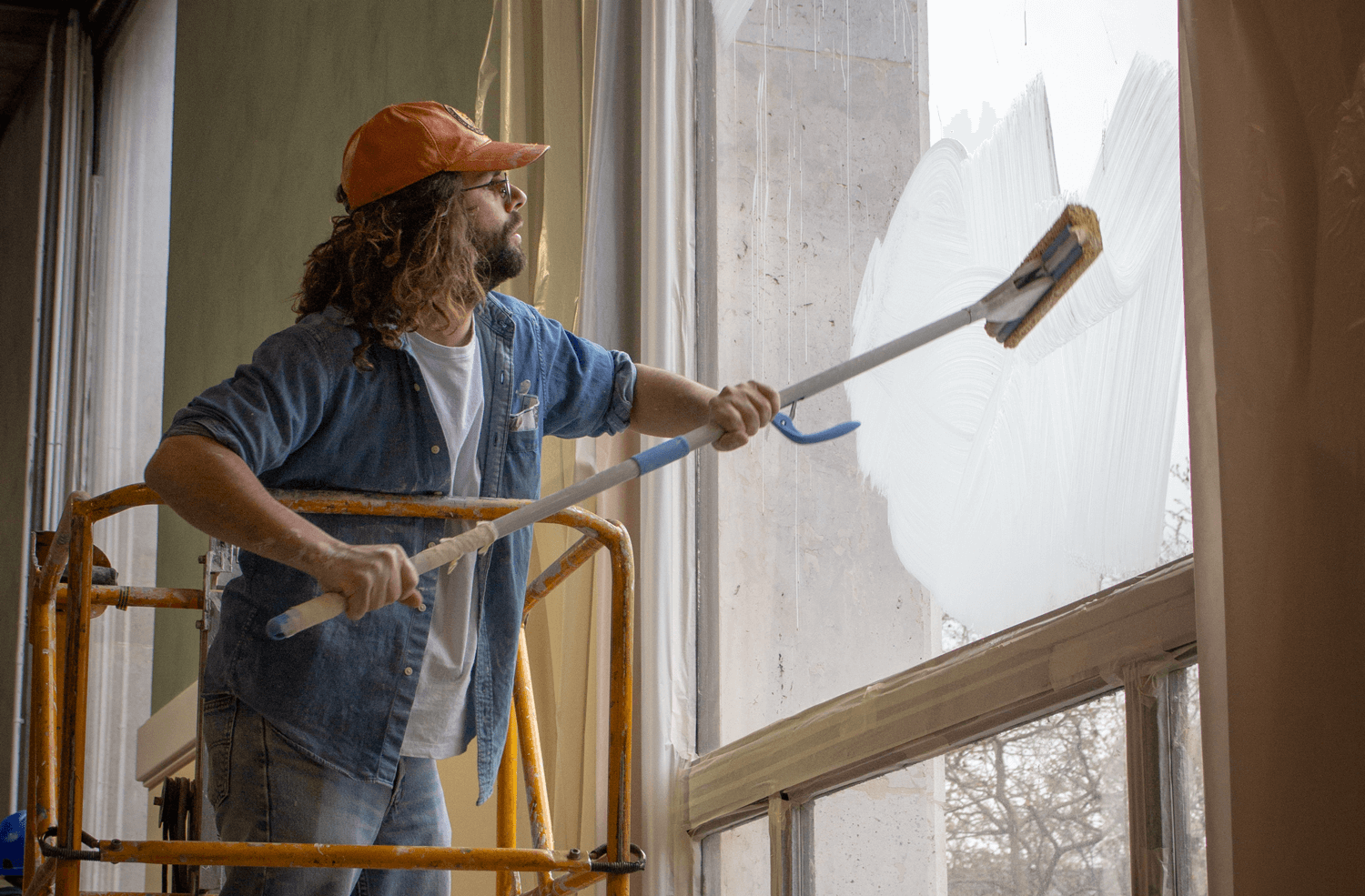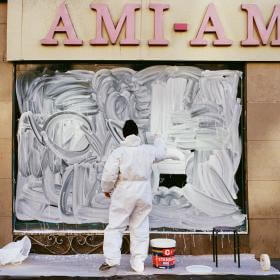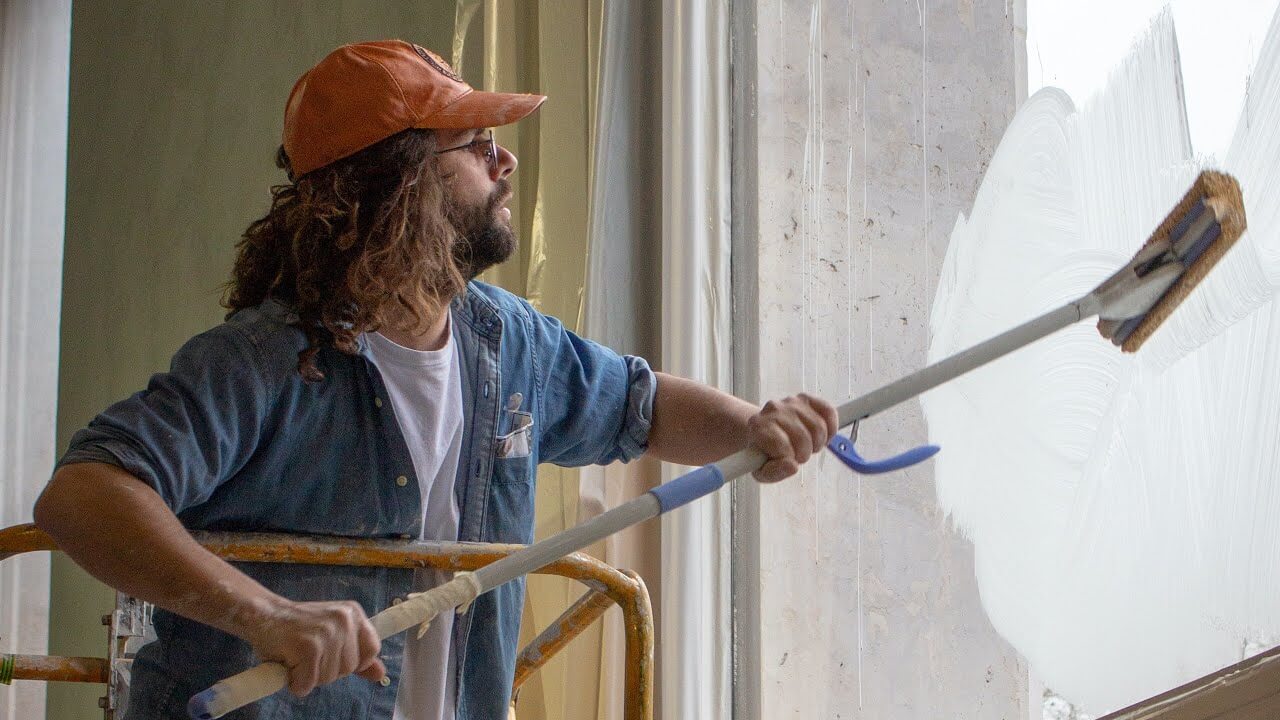SEARCH THE ENTIRE SITE

Pablo Tomek
Blanc de PolakPablo Tomek is a painter-sculptor-photographer but first and foremost a painter-painter, a rag picker for the Capitalocene age. In 2016, his exhibition ‘Travaux Publics’ [‘Public Works’] occupied the exterior arches of the Palais de Tokyo with a succession of monumental compositions inspired by industrial painting techniques. Tomek here completes this piece with a performative pictorial intervention across the windows of the Palais de Tokyo, currently under renovation. He adopts the movements of workers and pushes them to their limits in a form of painting that oscillates between abstraction and (dis)figuration.
“Workers spread whitewash on windows in order to block prying gazes. To do so they use energetic sweeps of their arms and sponges that leave textured traces across the glass. These anonymous paintings dot the city: some are opaque, others semi-transparent; some are lively and aggressive while others appear to have been executed more slowly to produce softer forms that are almost calming.”

Tomek’s studio of choice is the street: the disorder of the outside world is his playground, and he pirates the cityscape through unauthorized and illegal paintings. The drama of urban life serves as the artist’s precarious material, and enters into his studio practice through his various wanderings where chance encounters meet “outlandish details and mystical phases drawn from the city.” Tomek works through the superimposition of successive layers, incorporating mistakes, deletions, and corrections to create works that are akin to digital palimpsests. They evoke the biting and subversive language of graffiti, the heritage of abstract expressionism, and the techniques of industrial painting. Whitewash, mortar applied with trowels to wall off abandoned architectural structures, shamanic inscriptions traced out in fluorescent colours on concrete, the destruction of painting with pressure-washers: these are just some of the partial languages that Tomek manipulates to attain his perfectly impure paintings.


